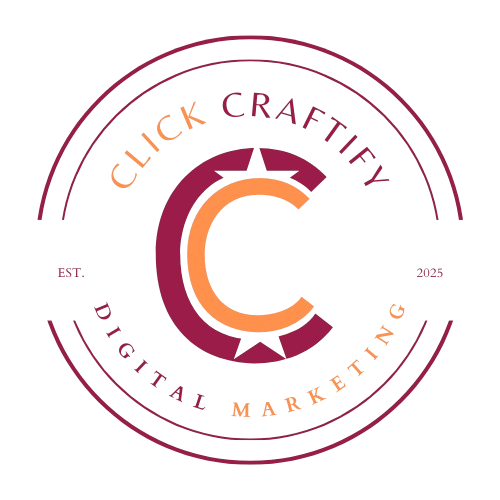
Introduction
In today’s digital-first world, businesses are constantly searching for effective methods to reach their target audiences. While biological marketing strategies such as SEO and material marketing are powerful, they take time to get the results. This is where the advertisements paid by offering steps, immediate visibility and average results. But how the paid advertisements work, and how can you take advantage of it to maximize your return on investment (ROI)? Let’s dive deep into the mechanics of the advertisement paid and find out the strategies that run success.
What is the advertisement paid?
Paid advertisement, often known as a pay-per-click (PPC) advertisement, is a digital marketing strategy, where businesses pay to display advertisements on various online platforms. These advertisements can appear on the search engine, social media, websites and mobile apps. Unlike organic marketing, which takes time in the manufacture of traction, paid advertisements immediately generate traffic and brand exposure.
Types of Paid Advertising
Search Advertisement: When users search specific keywords, the search engine appears on the result page (SERP).
Display the advertisement: Visual banner advertisements that appear on websites and apps within an AD network.
- Social media advertisements: Posts sponsored on platforms like Facebook, Instagram, LinkedIn and Tikok.
Native Advertisement: Mix originally with the website content and look like organic posts.
Video Advertisement: appear on YouTube, Tiktok and other video platforms.
- Remarketing Advertisement: Target users who first visited your website, but were not converted.
How to pay advertising works ?
1. Define goals and objectives
The first step in any paid advertising campaign is to define clear objectives. General goals include:
- Driving website traffic
- Increase in online sales
- Promote brand awareness
- Encourage app download
2. Choosing the Best Advertising Platform
Each advertising and marketing platform has unique strengths and caters to distinctive target market segments. The most famous platforms consist of:
- Google Ads: Ideal for seek commercials, display ads, and remarketing campaigns.
- Facebook & Instagram Ads: Best for visible and exceptionally focused advertising.
- LinkedIn Ads: Great for B2B marketing and professional networking.
- TikTok & YouTube Ads: Perfect for video-primarily based engagement.
- Twitter Ads: Suitable for actual-time engagement and trending subjects.
3. Keyword and Audience Targeting
To maximize ad performance, advertisers need to goal the right target market the use of diverse parameters:
- Demographics: Age, gender, income level, education, job name.
- Geographic Targeting: Focus on specific places. Behavioral Targeting: Interests, surfing behavior, and buy motive.
- Keyword Targeting: Select unique keywords to cause search advertisements.
- Lookalike Audiences: Target customers just like your present clients.
4. Crafting High-Converting Ad Creatives
Successful ads include compelling creative elements such as:
Attention-Grabbing Headlines: Clear, concise, and relevant.
- Engaging Visuals & Videos: High-pleasant pictures that appeal to clicks.
- Strong Call-to-Action (CTA): Persuasive activates like “Shop Now” or “Get Started Today.”
- Optimized Landing Pages: Ensure a seamless user enjoy to reinforce conversions.
5. Setting Up Bidding Strategies and Budgeting
Most paid marketing systems perform on an auction-based totally device, wherein advertisers bid for ad placements. Common bidding strategies include:
- Cost-Per-Click (CPC): Pay whilst users click on on an advert.
- Cost-Per-Impression (CPM): Pay for each 1,000 impressions.
- Cost-Per-Action (CPA): Pay handiest when a consumer completes a particular action (e.G., purchase, signal-up).
- Automatic bid: AI-driven dialect strategies that adapt to AD performance.
6. Tracking, monitoring and adaptation
To ensure high returns on investment (ROI), continuous monitoring and adaptation are necessary. Major demonstrations to track are included in the matrix:
- Click-Through Rate (CTR): The percentage of users who click on the advertisement after seeing it.
- Conversion Rate: The percentage of users who take the desired action after clicking.
- Cost-Re-Conversion: Total cost to acquire a customer.
- Return on advertising expenses (ROAS): Revenue generated for each dollar spent on advertisements.
Customizer strategies include A/B testing, targeting audiences, adjusting advertising creatives and Twenty -two bidding strategies to improve performance over time.
Best practice for high -performance paid advertising operations
- Start with a small budget: Test various advertising forms before scaling.
- Leverage retirement: Re -involved users who have previously interacted with your brand.
- Use high quality view: Eye catching graphics increase the engagement rate.
- Adapt to mobile: Make sure advertisements and landing pages are mobile friendly.
- Analyze competitive strategies: Learn from successful campaigns in your industry.
- Stay with trends: Advertising platforms often update algorithms and features.
Benefits of advertisement paid
1. Quick Traffic: Unlike SEO, the advertisements paid immediately visit the website.
2.Highly targeted audience: specific customers reach segments based on demographics, interests and behavior.
3. Scalability: Start with a small budget and scale as you see the result.
4.Average status results: Advanced analytics provide insight into performance and ROI.
5.Brand visibility: The increased exposure leads to more brand recognition and trust.
conclusion
The paid advertisement is a powerful tool that provides immediate results, exact audiences targeting and scalable development opportunities. However, success requires careful planning, ongoing adaptation and strategic execution. Understanding how the advertisement paid works and applies best practices, business can run meaningful engagement, increase conversion, and maximize ROI. Are you ready to use the power of the paid advertisement? Start experimenting with various strategies and see your business growing!
